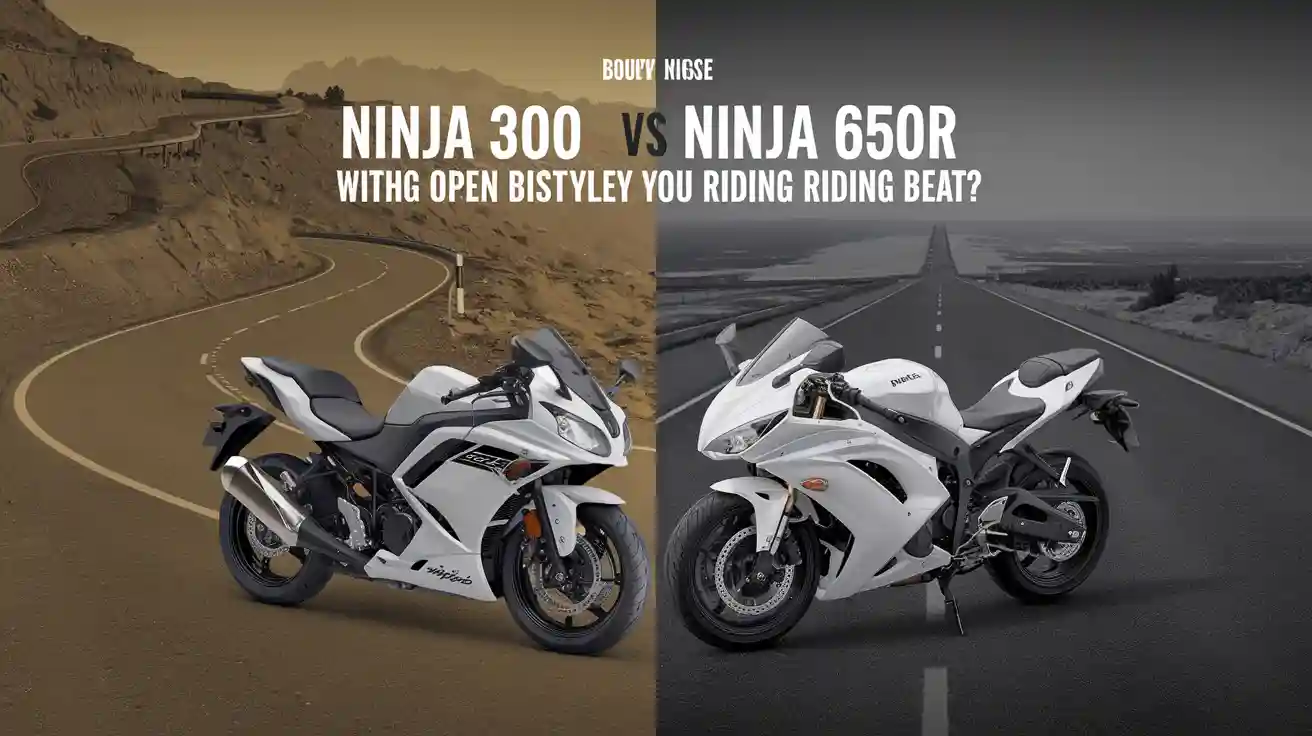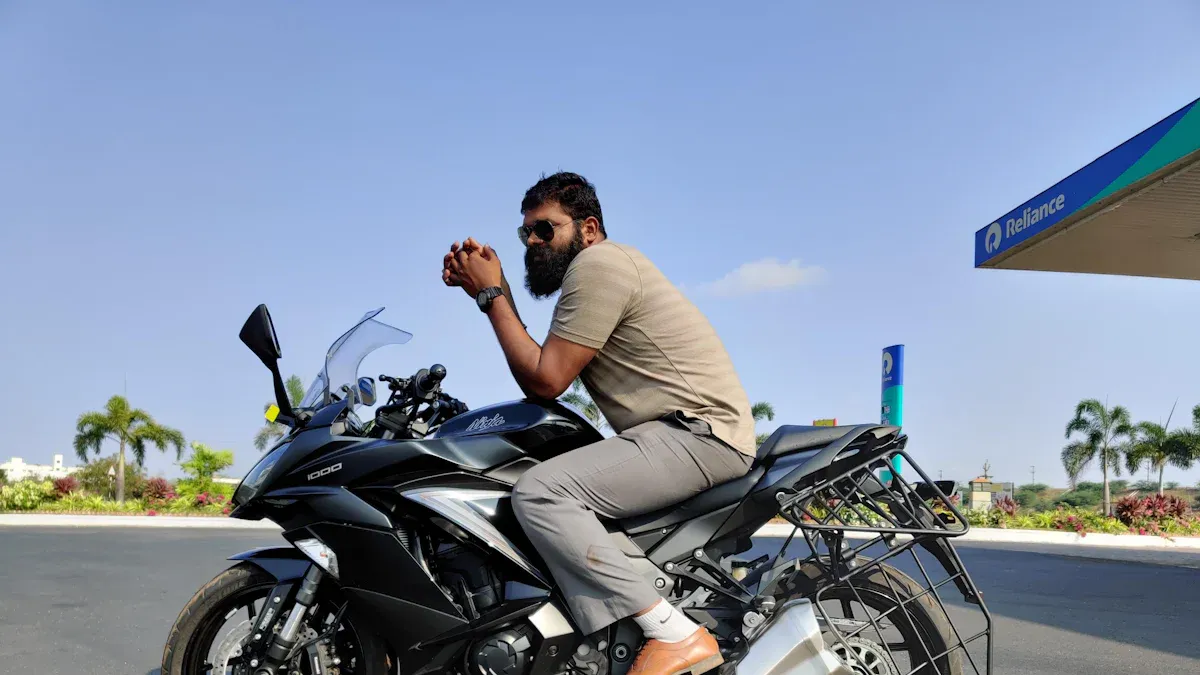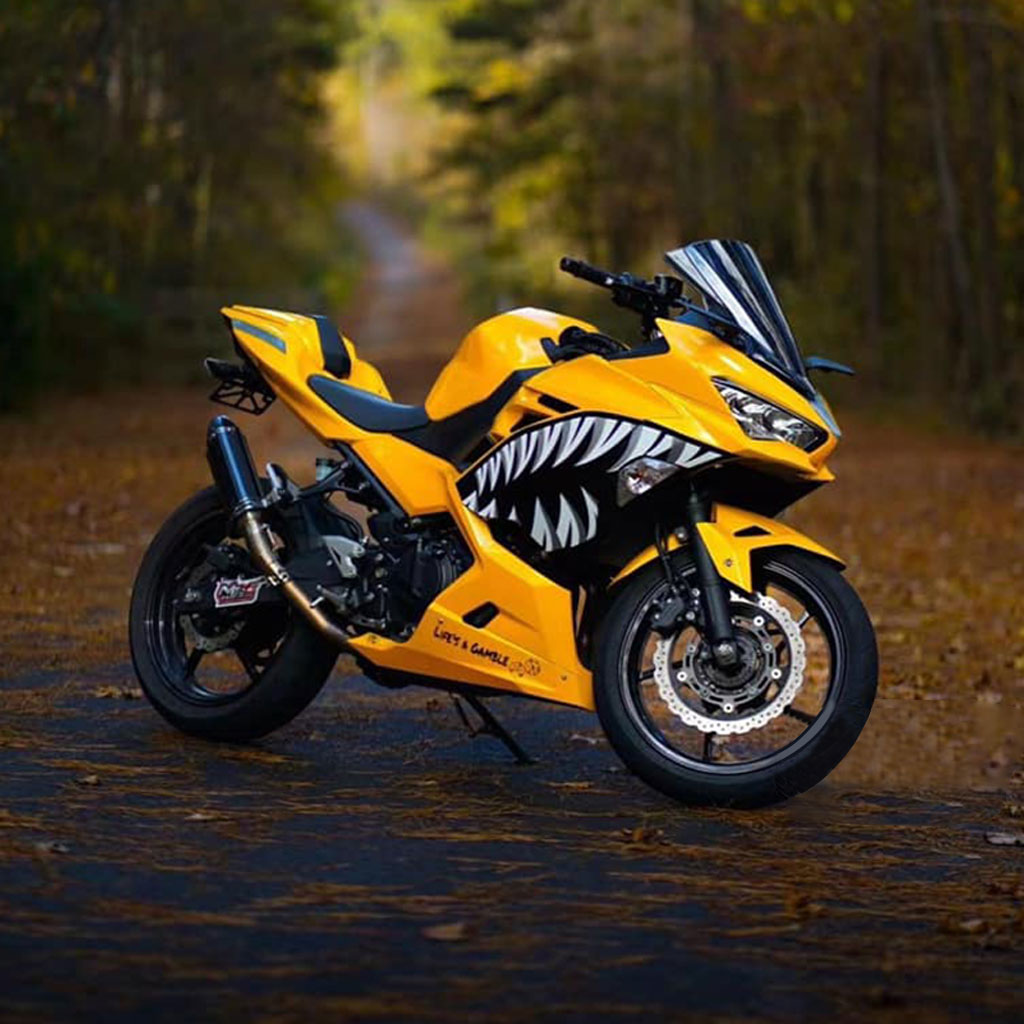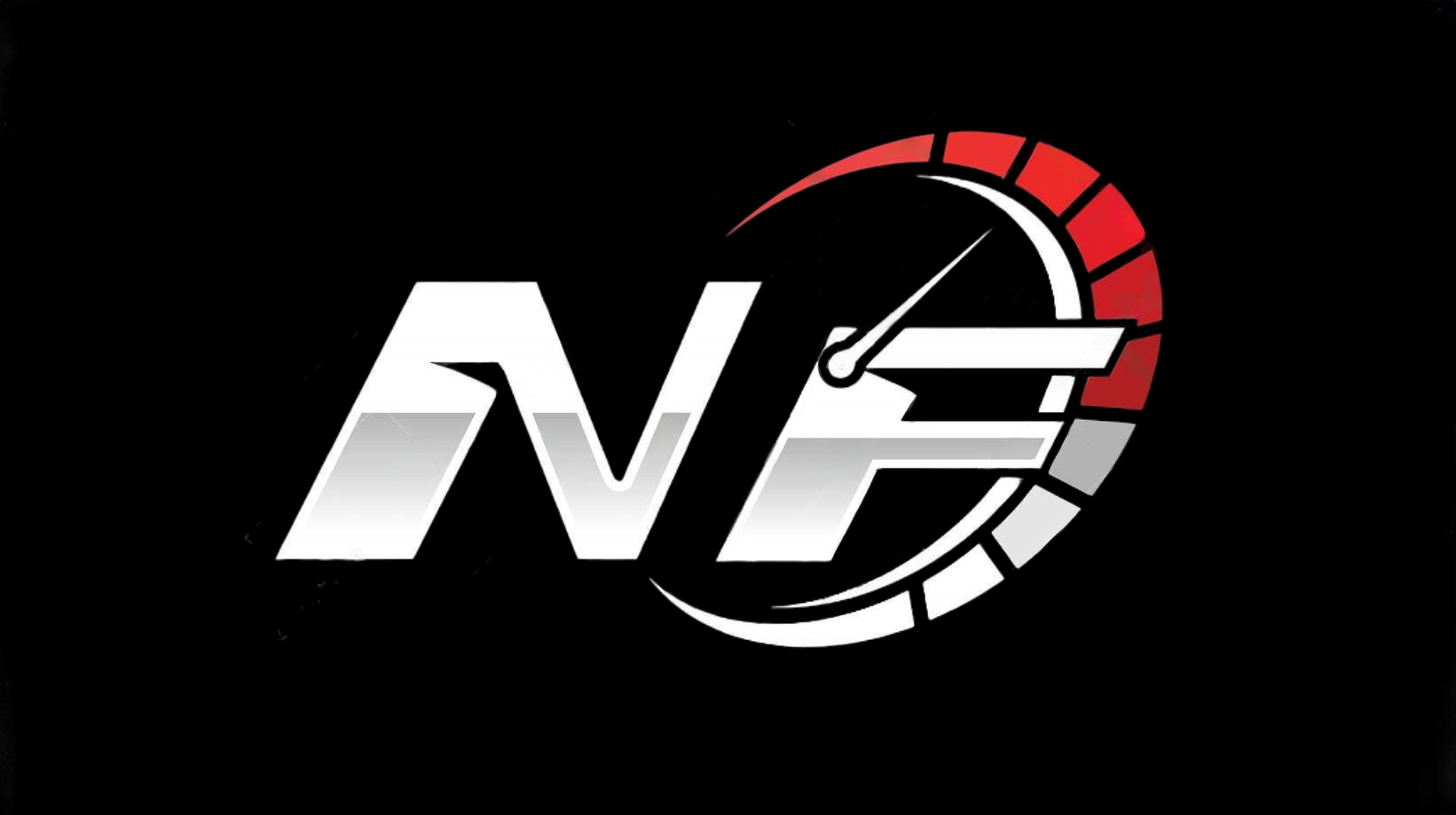Ninja 300R vs Ninja 650R Which Bike Fits Your Riding Style Best

If you want a lightweight bike that feels easy to handle, the kawasaki ninja 300r 2013 fits you best. You get smooth power and a relaxed seat, which makes daily rides or learning to ride much easier. If you crave more speed and comfort on long trips, the 2016 Ninja 650R gives you a stronger engine and extra features.
- Choose the 300R for city rides, learning, or short trips.
- Pick the 650R if you want more power, better comfort, and longer rides.
Quick Comparison: kawasaki ninja 300r 2013 vs 2016 Ninja 650R
Key Specs Side-by-Side
Here’s a quick look at how these two bikes stack up. This table helps you see the main differences at a glance:
| Specification / Feature | Kawasaki Ninja 300R (2013) | Kawasaki Ninja 650R (2016) |
|---|---|---|
| Price | Cheaper | More expensive |
| Gas Mileage | Better fuel efficiency | Lower fuel efficiency |
| Suspension | Smoother ride, better suspension | Poorer suspension, rougher on bumpy roads |
| Slipper Clutch | Present | Absent |
| Comfort | Less comfortable for long rides | More comfortable for extended riding |
| Power | Less powerful, good for legal speeds | More powerful, can reach 100 MPH |
| Build Quality | Stronger, better headlight mount | Weaker, flimsier headlight bracket |
| Throttle Operation | Smoother, great for city driving | Less smooth, more handlebar vibration |
| Rideability on Twisties | More fun and tossable | Not as good due to suspension |
| Brakes | 290 mm front disc, optional ABS | Dual 300 mm front discs, standard ABS in some |
Tip: If you want a bike that’s easy to handle and costs less, the kawasaki ninja 300r 2013 stands out. If you want more power and comfort, the Ninja 650R is a better pick.
Features That Matter for Riding Style
When you pick a bike, you want it to match how you ride. Here are some features that really make a difference:
- The Ninja 650R’s 649cc engine gives you strong power for commuting, cruising, and even sport riding.
- Its low seat and wide handlebar help you feel confident, whether you’re new or experienced.
- The suspension on the Ninja 650R tries to balance comfort and control, but the 300R actually feels smoother on rough roads.
- Both bikes have good brakes, but the Ninja 650R offers dual front discs and ABS for extra safety.
- The Ninja 650R’s adjustable windscreen and rubber-mounted seat make long rides more comfortable.
- The kawasaki ninja 300r 2013 feels lighter and more playful, which is great for city rides and twisty roads.
You should think about where you ride most and what feels best for you. Do you want a nimble city bike or a powerful machine for longer trips?
Riding Experience Differences

Power and Performance
When you twist the throttle on the Ninja 650R, you feel a strong rush of power. This bike can go from 0 to 60 mph in about 3.5 seconds. It can reach a top speed of around 130 mph if you find a safe place to try it. You get quick acceleration that makes highway riding and passing cars easy. The Ninja 650R feels fast and exciting, even if you do not push it to the limit.
The kawasaki ninja 300r 2013 gives you a smoother and more gentle ride. You will not get the same burst of speed, but you will feel in control. This bike lets you learn how to handle power without feeling overwhelmed. If you want to ride at legal speeds and enjoy the journey, the 300R fits your style.
If you want a thrill every time you open the throttle, the Ninja 650R delivers. If you want to build your skills and confidence, the 300R is a smart choice.
Handling and Agility
You will notice a big difference in how these bikes handle. The 300R feels light and easy to toss into corners. You can weave through city traffic or take on twisty roads with a smile. The bike responds quickly to your moves, so you feel connected to the road.
The Ninja 650R feels heavier, but it stays stable at higher speeds. You get a solid ride on the highway, but you might find it less playful in tight turns. The wider handlebars help you steer with confidence, but you need more effort to change direction compared to the 300R.
Comfort and Ergonomics
Long rides can be tough, but the Ninja 650R tries to keep you comfortable. The seat feels softer, and the riding position lets you relax your arms and back. You also get less wind hitting your chest, thanks to the adjustable windscreen.
The kawasaki ninja 300r 2013 has a sportier seat and a more forward-leaning position. You might feel a bit cramped on long trips, but for short rides or city commutes, it feels just right. The lighter weight also means you do not get tired as quickly when moving the bike around.
Everyday Usability
When you think about riding every day, you want a bike that makes life easier. The Ninja 300R and Ninja 650R both have strengths, but they fit different routines.
Ninja 300R: Your City Buddy
- You will love the Ninja 300R if you ride in busy city streets. The bike feels light, so you can zip through traffic and squeeze into tight parking spots.
- The seat height works for most riders. You can put your feet down at stoplights without a struggle.
- The clutch feels smooth. You will not get tired in stop-and-go traffic.
- The fuel tank gives you good mileage. You will not need to stop for gas often.
- The bike stays cool, even when you sit in traffic on hot days.
Ninja 650R: Your Comfy Cruiser
- The Ninja 650R shines when you ride longer distances. The bigger engine helps you merge onto highways with confidence.
- The seat feels wider and softer. You can ride for hours without feeling sore.
- The windscreen blocks more wind. You will not feel as tired after a long ride.
- The bike has more storage options. You can add saddlebags or a tail bag for groceries or gear.
- The brakes feel strong. You get more stopping power, which helps in busy traffic.
Tip: If you park in tight spaces or need to carry your bike up a curb, the Ninja 300R feels much easier to handle. If you want to carry a passenger or extra bags, the Ninja 650R gives you more room and power.
Everyday Life Table
| Feature | Ninja 300R | Ninja 650R |
|---|---|---|
| Weight | Lighter, easy to move | Heavier, more stable |
| Parking | Simple in small spots | Needs more space |
| Fuel Economy | Great | Good, but less |
| Comfort | Good for short trips | Best for long rides |
| Storage Options | Limited | More available |
You should think about your daily routine. Do you ride in the city, or do you travel longer distances? The right bike will make your everyday rides smoother and more fun.
Rider Profiles and Best Fit
Best for Beginners and Commuters
If you are just starting out or you ride to work every day, you want a bike that feels easy and safe. The kawasaki ninja 300r 2013 stands out for new riders and daily commuters. It gives you less power, so you do not feel overwhelmed. The lighter weight makes it simple to move around in traffic or park in tight spots. You get a smooth clutch and easy shifting, which helps a lot when you stop and go at city lights.
Here’s a quick table to help you see what matters most for beginners and commuters:
| Factor | Kawasaki Ninja 300R (2013) | Kawasaki Ninja 650R (2016) |
|---|---|---|
| Power | 34 hp, beginner-friendly | 62 hp, more for intermediate riders |
| Weight | 379-384 lbs, light and agile | 465 lbs, heavier and more stable |
| Handling | Great cornering, easy to control | Good, but less nimble |
| Ergonomics | Sporty, may feel tight for bigger riders | High pegs, can cause knee discomfort |
| Commuting Suitability | Easy for city speeds, slipper clutch helps | Less comfy for daily commutes |
| Highway Performance | Buzzy above 70 mph | Handles highways better |
| Brakes | Strong, ABS available | Dual discs, but lever feel not as good |
| Resale Value | Easy to sell as a beginner bike | Harder to resell |
| Price | Lower starting price | Higher price |
| Ideal Rider | Beginners, smaller riders, commuters | Larger riders, those wanting more power |
You will find the Ninja 300R easier to handle if you are smaller or want a bike that feels light. The seat height works for most people, and you can touch the ground with your feet. If you ride mostly in the city, you will love how nimble it feels. The Ninja 650R gives you more power, but it feels heavier and can be less comfortable for daily rides, especially if you are not tall or strong.
Tip: If you want a bike that helps you learn and keeps your commute simple, the Ninja 300R is a smart pick.
Best for Experienced Riders and Touring
If you have more miles under your belt or you dream of long road trips, you might want something with extra power and comfort. The Ninja 650R fits this role well. You get a bigger engine, which means you can pass cars on the highway without worry. The seat feels wider and softer, so you can ride for hours without feeling sore.
Many riders with lots of experience say the Ninja 650R works great for both city and highway rides. One rider even used it every day for years, riding in all kinds of weather. The bike never left him stranded. You can trust it for daily commutes or weekend adventures. If you know how to control the throttle and you ride with care, you will find the 650R easy to manage, even if you are not a pro racer.
You also get more space for bags and gear. This helps if you want to travel or carry things with you. The windscreen blocks more wind, so you do not get tired as fast on long trips.
Note: If you want to ride far and fast, or you need a bike that can handle highways with ease, the Ninja 650R gives you what you need.
Best for Sporty Riding
Do you love twisty roads and fast corners? Do you want a bike that feels quick and sharp? The Ninja 650R brings strong performance for sporty riders. Its 649cc engine gives you fast acceleration and lots of torque, so you can speed up quickly when you need to. The bike can run a quarter mile in just over 12 seconds at almost 109 mph. If you twist the throttle at 60 mph, you can hit 80 mph in less than four seconds.
Here are some features that make the Ninja 650R great for sporty riding:
- Quick-revving engine with strong mid-range power
- Rigid twin-pipe frame for sharp handling
- Suspension that balances comfort and control
- Dual front disc brakes with optional ABS for strong stopping power
- Wide handlebars and low seat for confident cornering
- Lightweight wheels for better agility
| Performance Metric | Details and Impact on Sporty Riding Style |
|---|---|
| Engine | 649cc, liquid-cooled, strong torque and fast response for quick acceleration |
| Suspension | 41mm fork and adjustable shock, keeps wheels steady during hard riding |
| Frame Design | High-tensile steel, helps you stay in control during sharp turns |
| Braking System | Dual 300mm discs, ABS option, gives you strong and safe stopping power |
| Ergonomics | Wide handlebar, sporty seat, and good footpeg placement for better control |
| Wheels | Lightweight aluminum, improves how the bike handles and feels on the road |
| Acceleration | 1/4 mile in 12.06 seconds at 108.79 mph, 60-80 mph in 3.58 seconds |
If you want a bike that feels playful and easy to flick through corners, the kawasaki ninja 300r 2013 still gives you a lot of fun, especially on tight roads. It feels lighter and lets you build your skills. But if you want more speed and sharper handling, the Ninja 650R takes things up a notch.
Callout: For pure sporty riding, the Ninja 650R’s power and frame design give you the edge. If you want to learn and enjoy twisty roads at a slower pace, the Ninja 300R is still a blast.
Transitioning from kawasaki ninja 300r 2013 to 2016 Ninja 650R
What to Expect
When you move up from the kawasaki ninja 300r 2013 to the 2016 Ninja 650R, you will notice a big change. The Ninja 650R feels heavier and more powerful. The engine sounds deeper and pulls harder when you twist the throttle. You will sit in a more relaxed position, which helps on long rides. The brakes feel stronger, and the bike stays steady at high speeds. You might feel a little nervous at first, but you will get used to it quickly.
The Ninja 650R gives you more comfort and speed, but it also asks for more control from you.
Learning Curve
You will need some time to adjust to the new bike. The throttle responds faster, so you must be gentle when you start moving. The clutch feels different, and the bike takes up more space on the road. You might find it harder to make tight turns at low speeds. Parking can feel tricky because of the extra weight. Take your time and practice in a safe place.
Here are some things you may need to learn:
- How to handle the extra power
- How to use the stronger brakes
- How to balance the heavier bike at stops
Tips for a Smooth Transition
You can make the switch easier with a few simple steps:
- Start slow. Ride in quiet areas before you hit busy streets.
- Practice braking and turning in an empty parking lot.
- Get used to the new seat height and handlebar position.
- Wear all your safety gear every time you ride.
- Ask a friend or mentor to ride with you for support.
Tip: Don’t rush. Give yourself time to build confidence on your new Ninja 650R.
Cost of Ownership Comparison
Purchase Price
When you look at used bikes, price matters a lot. You want to get the best value for your money. Here’s a quick look at what you might pay for these models in the used market:
| Model | Average Purchase Price (Used Market) |
|---|---|
| 2013 Kawasaki Ninja 300R | N/A |
| 2016 Kawasaki Ninja 650R | N/A |
| 2013 Kawasaki Ninja 650R | $4,370 |
You might notice there’s no exact price for the 2013 Ninja 300R or the 2016 Ninja 650R. The 2013 Ninja 650R averages about $4,370. Prices for the 300R usually come in lower, so you can expect to spend less if you choose the smaller bike. Always check local listings for the best deals.
Maintenance and Upkeep
You want a bike that doesn’t give you headaches. The Ninja 300R stands out for its reliability. Most owners say it runs well for years. Some mention small fairing gaps, but these are easy to fix at home. There were a few recalls for things like the ECU and ABS, but Kawasaki handled them quickly. Problems usually show up early and get fixed under warranty.
For the Ninja 650R, you don’t see many common complaints. Some riders talk about possible transmission issues, but nothing major pops up often. Both bikes need regular oil changes, chain care, and brake checks. If you keep up with basic maintenance, both bikes should last a long time.
Tip: Kawasaki’s dealer support helps a lot if you ever run into trouble. They handle recalls and repairs well.
Insurance and Running Costs
You want to know how much you’ll spend to keep your bike on the road. The Ninja 300R wins for fuel savings. In a special test, it reached up to 100 mpg at low speeds. If you ride harder, you might see about 50 mpg. The Ninja 650R uses more gas, but exact numbers are hard to find.
Insurance usually costs less for the Ninja 300R. It has a smaller engine and appeals to newer riders. The Ninja 650R, with its bigger engine, might cost more to insure. Both bikes have similar costs for tires and basic parts.
- Ninja 300R: Cheaper to fuel and insure, great for saving money.
- Ninja 650R: Higher running costs, but you get more power and comfort.
If you want to keep costs low, the Ninja 300R is the smart pick. If you want more performance and don’t mind spending a bit more, the Ninja 650R makes sense.
You want a bike that matches your riding style and experience. If you are new to motorcycles or want a budget-friendly ride, the kawasaki ninja 300r 2013 makes city trips and learning easy. For more power, comfort, and longer rides, the Ninja 650R stands out. Its upright position and smooth engine help you enjoy daily commutes or weekend adventures. Pick the bike that fits your confidence and goals—your perfect ride is waiting.
FAQ
Is the Ninja 300R a good first bike?
Yes, you can start with the Ninja 300R. It feels light and easy to control. You will not feel overwhelmed by the power. Many new riders love how simple it is to learn on this bike.
Can you ride the Ninja 650R on long trips?
You can take the Ninja 650R on long rides. The seat feels soft, and the windscreen helps block wind. You will stay comfortable for hours. Many riders use it for touring and weekend adventures.
Which bike costs less to maintain?
The Ninja 300R usually costs less to keep running. You will spend less on gas and insurance. Parts and repairs also cost less. If you want to save money, the 300R is a smart choice.
Can shorter riders handle these bikes?
- You can ride both bikes if you are shorter.
- The Ninja 300R has a lower seat, so you can touch the ground easily.
- The Ninja 650R feels heavier, but many shorter riders manage it with practice.
Does the Ninja 650R have ABS?
Some Ninja 650R models come with ABS. You should check the specific bike before you buy. ABS helps you stop safely, especially in wet or slippery conditions.
See Also
Comparing OEM And Aftermarket Fairings For Ninja 500
Detailed Analysis Of Ninja 650 Kawasaki Fairing Performance
Best Five Fairing Styles For Ninja 400 In 2025

